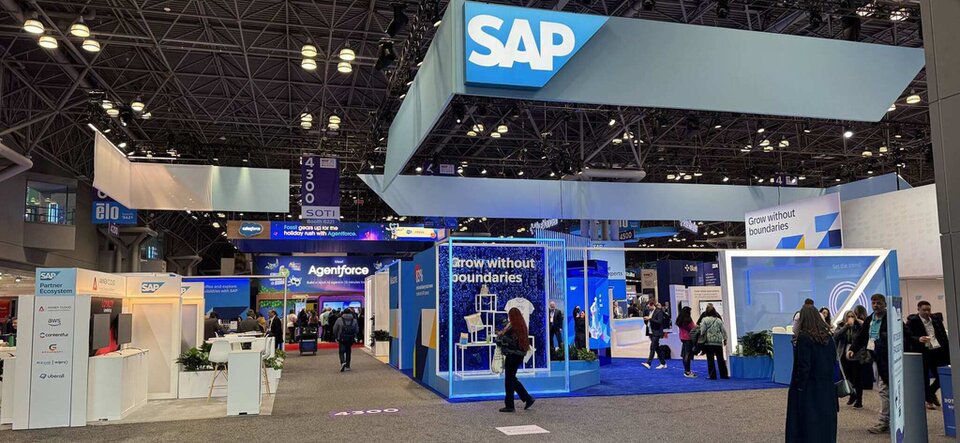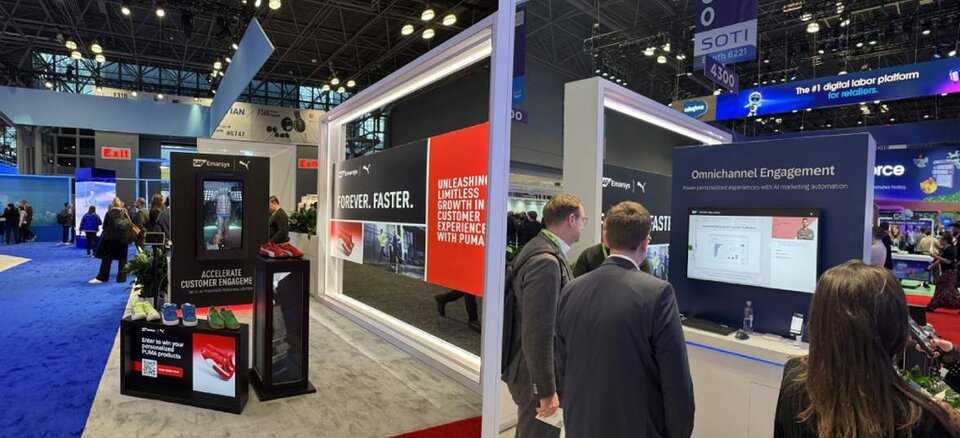
Exhibitor Experience:
SAP Emarsys Launches Rebranding at NRF 2025
At NRF 2025, SAP Emarsys had the exciting opportunity to showcase its new brand identity and latest innovations in omnichannel customer engagement. Our booth was a vibrant reflection of the rebranding, featuring our sleek new logo and messaging that emphasizes our commitment to empowering marketers with cutting-edge solutions. The reactions from clients, partners and prospects were overwhelmingly positive, recognizing the growing synergies between SAP and Emarsys and a clear move towards a unified platform bringing greater efficiency and personalization to brands’ marketing strategies.
Throughout the event, we engaged with attendees who were eager to learn more about how the SAP Emarsys ecosystem can help them deliver superior customer experiences. The buzz around our booth was palpable, especially when PUMA joined us on stage to share insights into our new AI tools, conversational messaging features, and the recent expansions to our omnichannel personalization tools. Attendees were particularly excited about the mobile wallet capabilities and how our platform could help them drive customer loyalty and connect their digital and in-store experiences.
Social commerce should be treated as a tactic within a broader omnichannel strategy, similar to traditional advertising or a company website. Companies must consider it as another tool in the marketing toolbox that drives measurable sales and helps boost brand equity by increasing visibility and engagement.
SAP Emarsys is redefining omnichannel engagement—bringing AI-driven personalization, seamless integrations, and real-time customer connections to the forefront of modern marketing.



Brands must have a clear strategy for their content, designing them to capture attention quickly and explain value within a few seconds, unlike TV commercials or website content, where brands can be more detailed and expansive.
One advantage of social commerce is its measurability. Unlike traditional advertisements, which lack direct attribution, social commerce campaigns often include integrated calls to action, where consumers can click and purchase within the platform. Tracking metrics like engagement, click-through rates, and conversions in real-time makes it easier to justify additional spending and assess ROI.
Ultimately, businesses must view social commerce as a brand-building tool, understanding that consistent exposure to social platforms can increase awareness and trust, even if purchases do not materialize immediately. Success in a dynamic e-commerce ecosystem is about crafting strategies that balance short-term conversions with long-term brand loyalty, making social commerce a game-changer for driving sustainable growth in the coming years.






